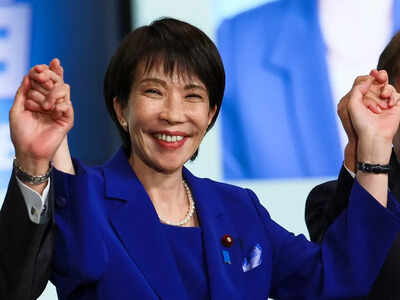ARTICLE AD BOX

Inspired by Baroness Margaret Thatcher, Sanae Takaichi long aspired to become Japan’s “Iron Lady.” It was only on her third attempt that the 64-year-old achieved a milestone long pursued by women in Japanese politics.
In a historic parliamentary vote, she was confirmed as Japan’s first female prime minister, closing a chapter on decades of persistence that began far from the corridors of power.Born in 1961 in Nara Prefecture, Takaichi grew up in a household far removed from politics. Her father worked in an automotive firm, and her mother was a police officer. Even so, ambition and curiosity shaped her early years. An avid drummer and pianist, she was known for breaking drumsticks during heavy metal practices.
She also enjoyed motorcycles, cars, and scuba diving — interests that hinted at a restless spirit and a willingness to challenge convention.
From Nara to Kobe: An unconventional educational journey
Takaichi attended Nara Prefectural Unebi High School and qualified to matriculate at Keio and Waseda universities in Tokyo. Her parents, however, refused to fund tuition for a woman studying away from home, directing her instead to Kobe University. She commuted six hours daily to attend the public research institution, established in 1949 and known for pioneering business administration education in Japan.
Among Kobe University’s alumni are Sōsuke Uno, Japan’s 75th prime minister, Nobel laureate Shinya Yamanaka, and Toyota Motor’s first president, Rizaburo Toyoda.After graduation, she enrolled in the Matsushita Institute. With its support, she moved to the United States in 1987 to serve as a congressional fellow in the office of Democratic congresswoman Patricia Schroeder. Her time in the US cemented an approach to politics grounded in pragmatism and vigilance, shaping her future policy positions and reinforcing her admiration for Thatcher’s model of leadership.
Entering politics: Persistence and principle
Takaichi ran as an independent in her first parliamentary election in 1992 but did not succeed. Undeterred, she won a seat a year later and joined the LDP (Liberal Democratic Party) in 1996. Over the following decades, she was elected as a member of parliament ten times, losing only once, and built a reputation as one of the party’s most outspoken conservative voices.Her government experience spans senior roles, including minister for economic security, state minister for trade and industry, and a record-breaking tenure as minister for internal affairs and communications.
She first entered the LDP leadership race in 2021, losing to Fumio Kishida. She ran again in 2024, topping the first round of voting but ultimately losing to Shigeru Ishiba. Finally, in 2025, she secured victory, becoming the first female prime minister in Japan’s history.
Policy informed by personal experience
Takaichi’s conservative values remain central to her politics, but her personal life has influenced policy priorities. She has emphasised expanding healthcare for women, supporting household and caregiving workers, and improving childcare access. “I have personally experienced nursing and caregiving three times in my life,” she said. “I want to create a society where people don’t have to give up their careers,” AP reports.A protégé of the late Shinzo Abe, she has pledged to revive the economic vision of “Abenomics,” with a focus on public spending and strategic borrowing. Her advocacy extends to national security, calling for easing constitutional restrictions on Japan’s Self-Defence Forces.
A path defined by determination
The story of Sanae Takaichi, a student who once commuted for six hours daily, became a congressional fellow in Washington, D.C., and ultimately rose to Japan’s prime minister, exemplifies a journey defined by daring to go against the grain. Her career path reflects the interplay of education, international exposure, and steady political ascent, establishing her as a figure who has redefined what leadership can look like in Japan.

 8 hours ago
5
8 hours ago
5









 English (US) ·
English (US) ·